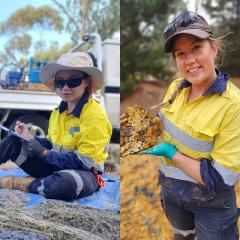MIWATCH leaves behind their first footprint in South Australia
Lexi Kng shares how the MIWATCH team made their way to South Australia and marked their first stop at the Brukunga Pyrite Mine for mine waste characterisation
Last month, Dr Laura Jackson and I visited the Brukunga legacy mine, located 4km north of Nairne, and 40km east of Adelaide in the Mount Lofty Ranges of South Australia. This mine was originally mined for iron sulfide minerals (pyrite and pyrrhotite) using open pit methods between 1955 and 1972. After the operation, this mine was taken over by the South Australian government for an ongoing remediation program. Following on from a desktop study with Geological Survey of South Australia (GSSA) to identify prospective mine waste for critical metal recovery, the characterisation of Brukunga’s mine waste is the first site for a great upcoming field season.
This is a significant project not just to MIWATCH and GSSA but also to me as this is my first field trip since joining the team. On our first day, we were given a mine tour by Benjamin White to better understand the history and condition of the mine waste sites. With assistance from Mark Varga and Adrian Fabris (GSSA) we had the power auger (supplied by GSSA), ready for augering the tailings storage facility (TSF).
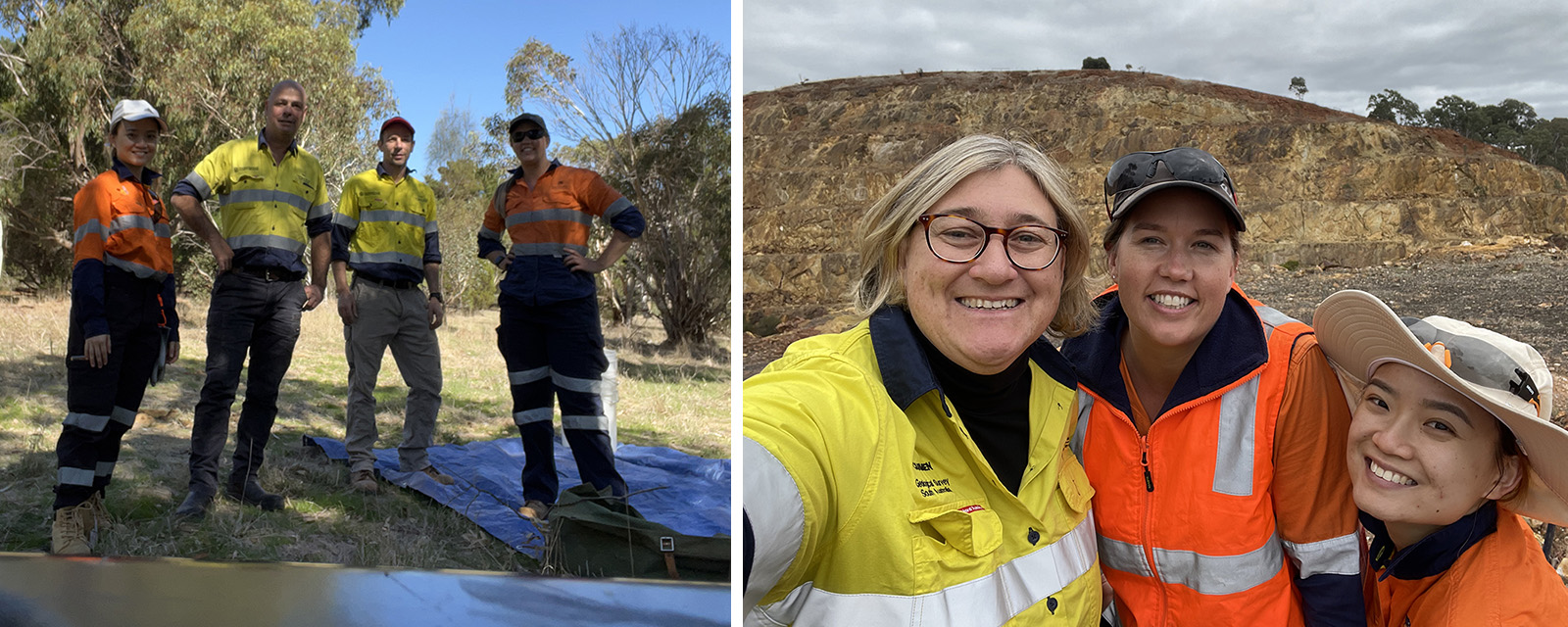
Despite difficulties due to a TSF cover with rocks, we were able to auger 3 holes to max. 7m depth using help from site.
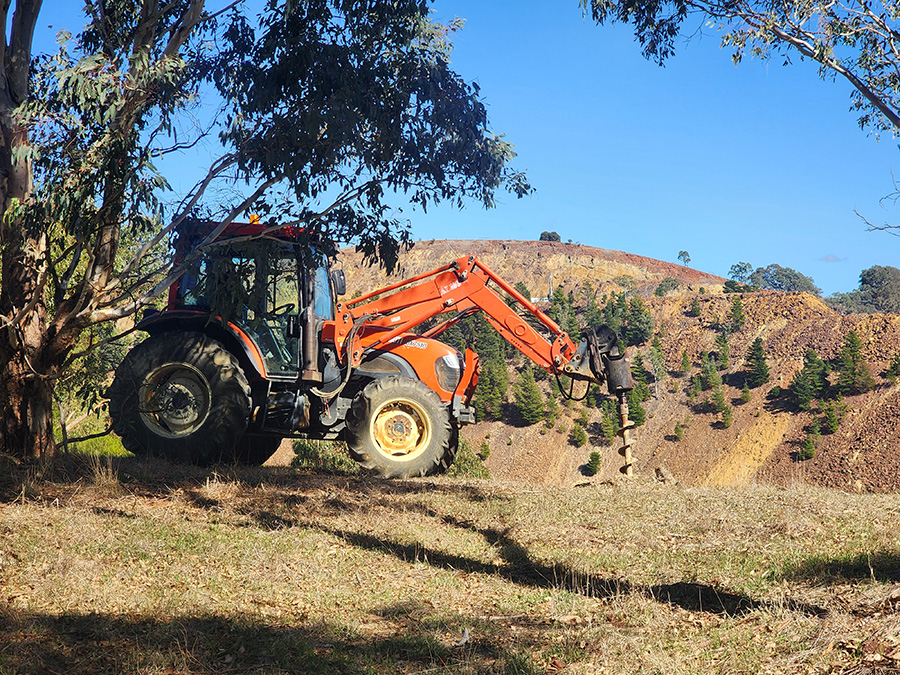
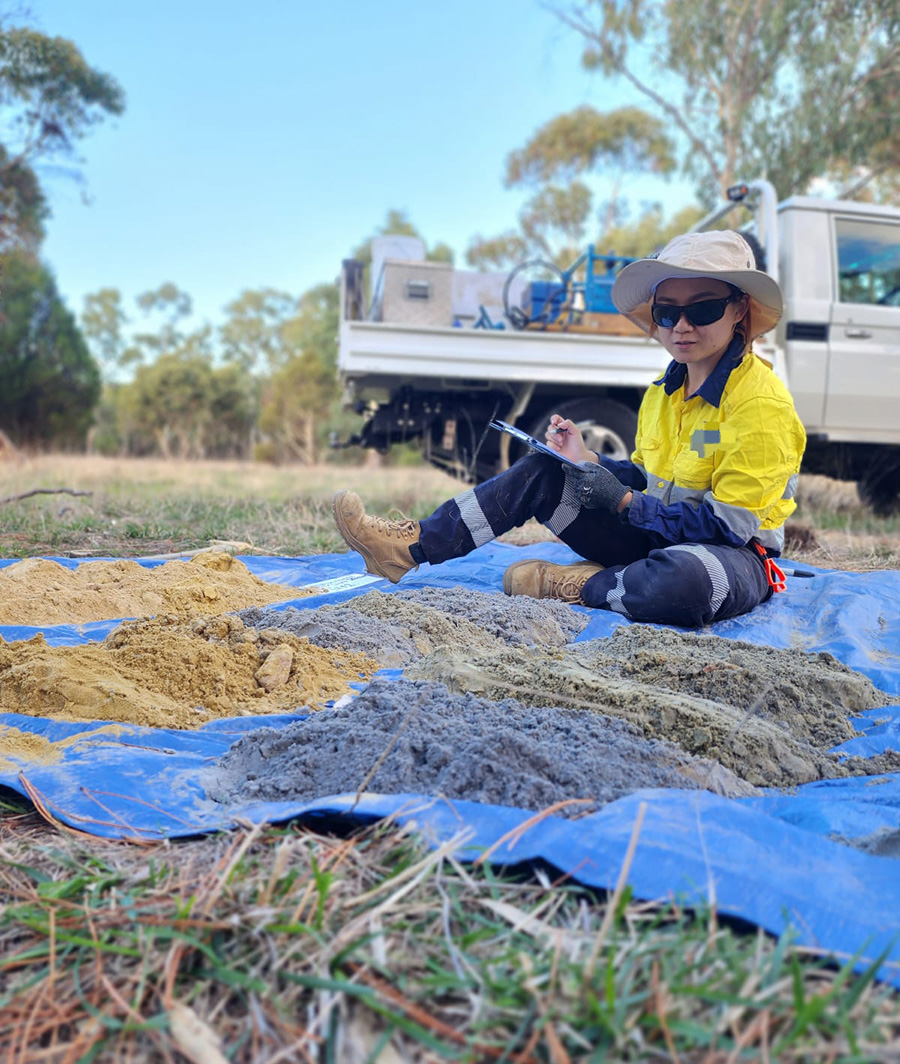
We sampled 68 cool-looking slimes, waste rocks and secondary minerals from the dam wall seeps, waste rock piles and slime ponds. The secondary crystals looked delicate but they were strong!
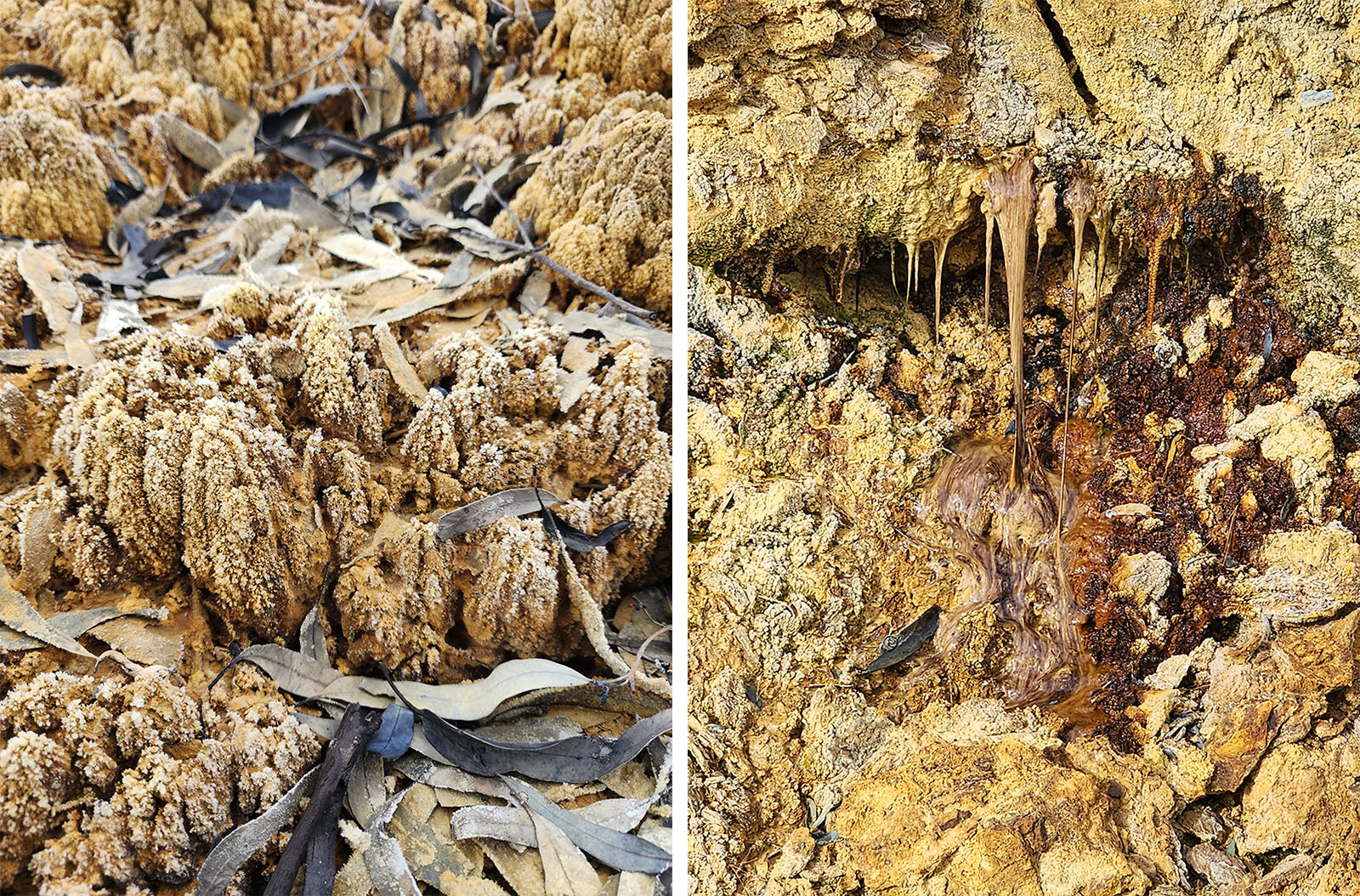
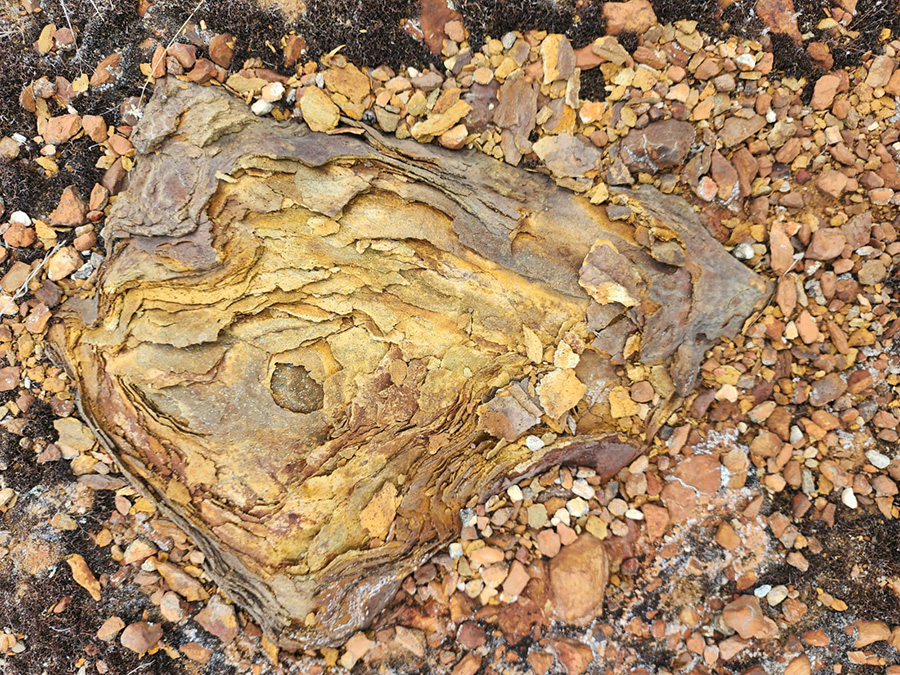
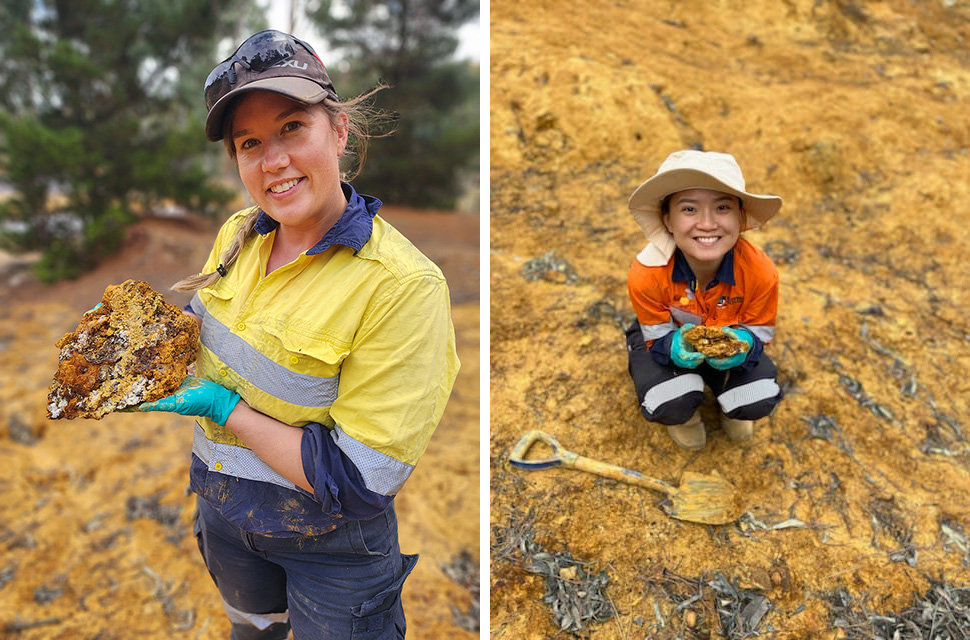
On the third day of the trip, Carmen Kraft (GSSA) also took her time off to give us some advice on the sampling locations and techniques that we could adapt to our trip’s challenges. One of the cool things about this field trip was to have the pleasure of watching the thriving wildlife wandering around the mine, including rabbits, kangaroos and Rainbow Lorikeets. How amazing is that!
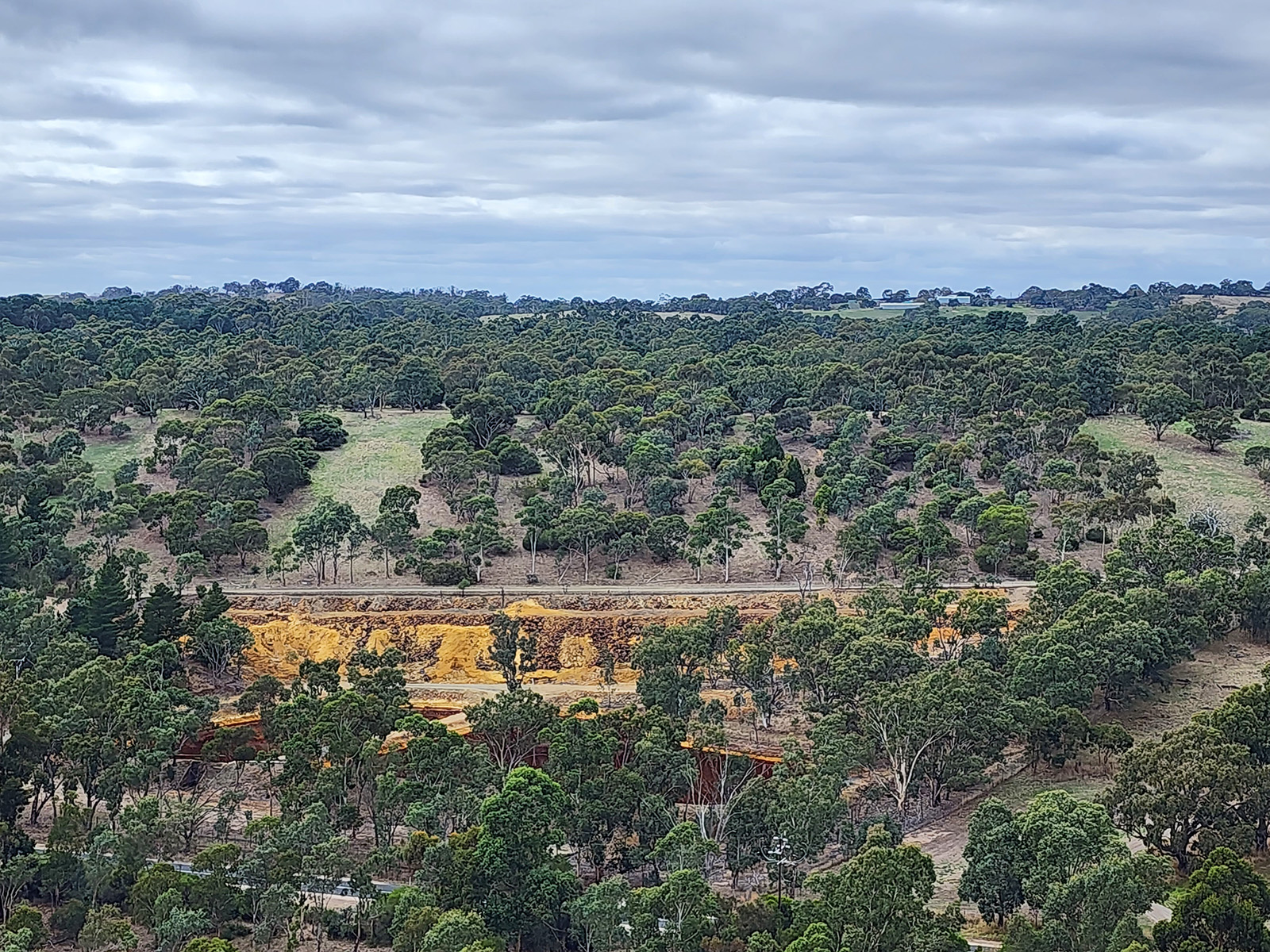
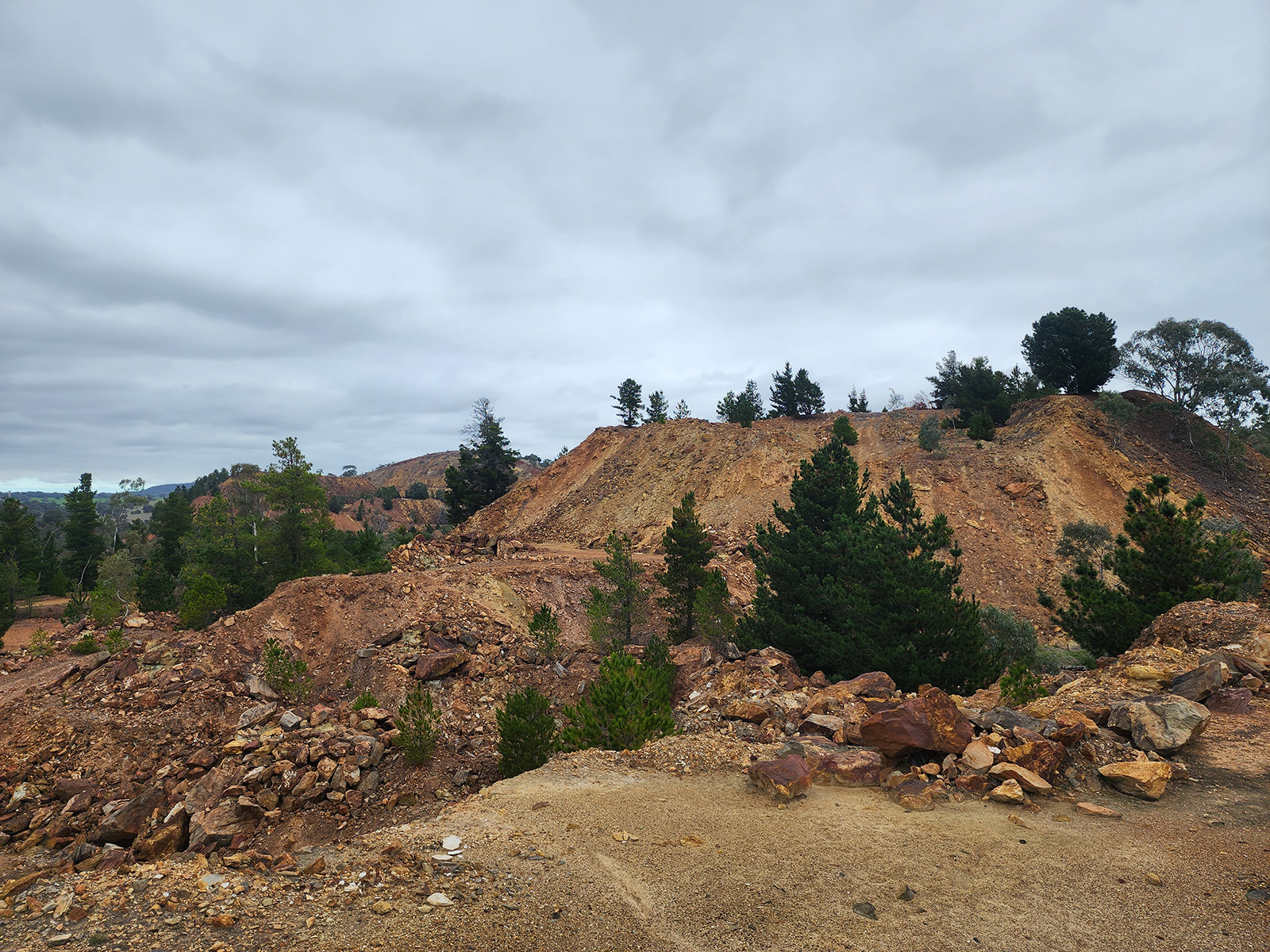
I am really glad to join this field trip, especially after having conversation with the mine personnel who lived nearby the mine. The Brukunga Pyrite Mine has ongoing acid mine and metalliferous drainage (AMD) issues which are currently managed by the South Australia government. Their efforts include treating any mine water that has been collected at the acid pond and clean creek water will be diverted away from the mine site to prevent contamination. Despite the environmental risks, the government sees this as an opportunity to evaluate the potential for extracting any minerals that could be beneficial for the mining sector as part of the 2022 Critical Minerals Strategy. This could be a win-win solution for the government and the local communities as many are hopeful of options that could generate income to the local community, reduce the footprint of waste materials and the environmental risks, as well as the associated remediation cost.
A huge thank you to Mark, Adrian, Carmen, Ben and Joe for making this trip such a memorable trip to me. Thanks, Laura, for your patience, teaching and help throughout the trip.
The samples are currently stored in the Core Library, Tonsley waiting to be analysed. I hope to share the interesting results with you once we have our data interpreted. Stay tuned!

